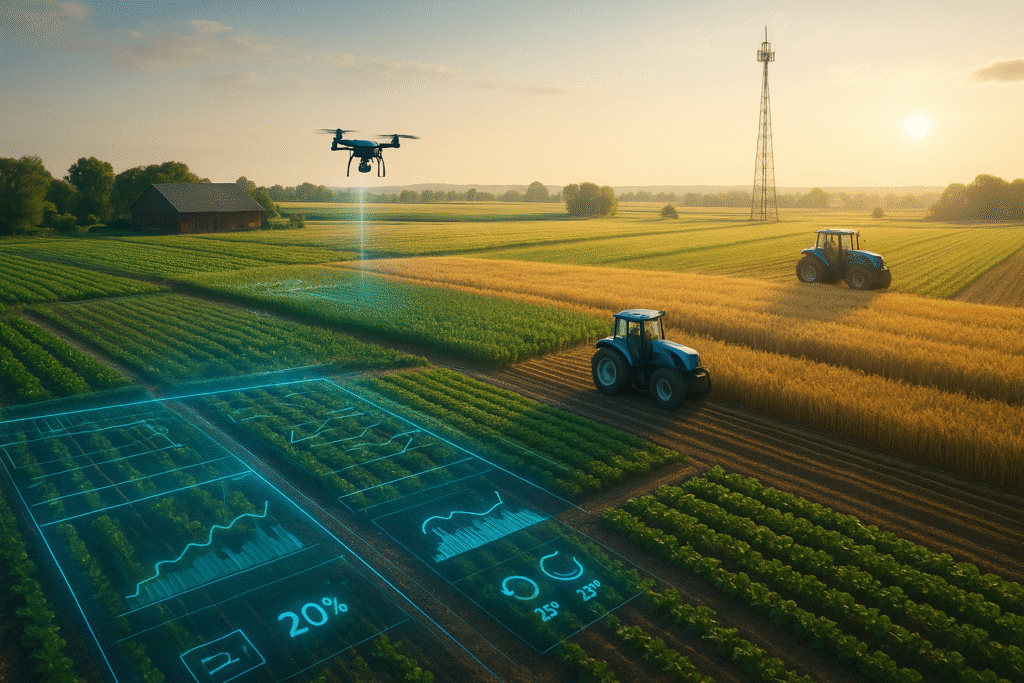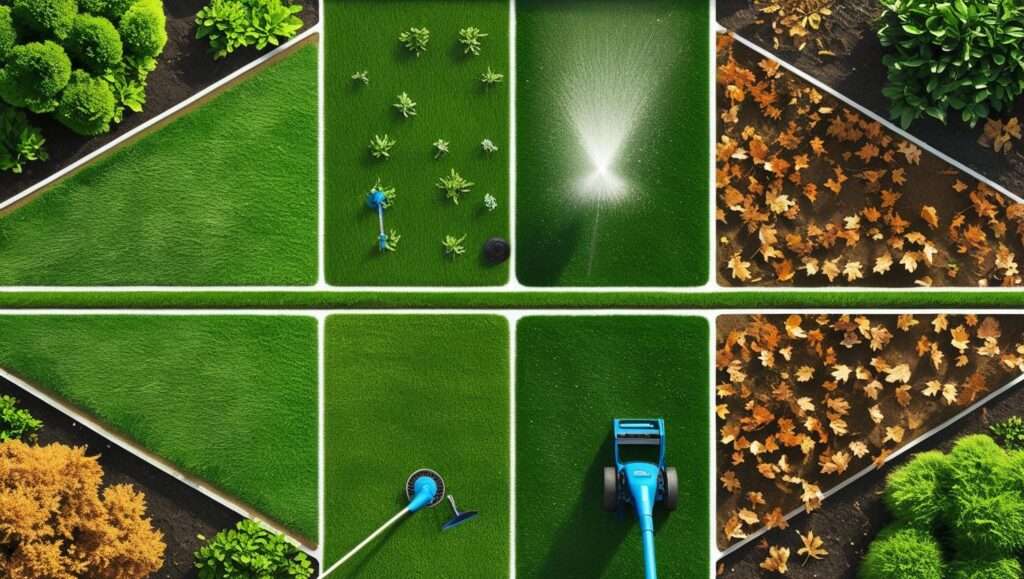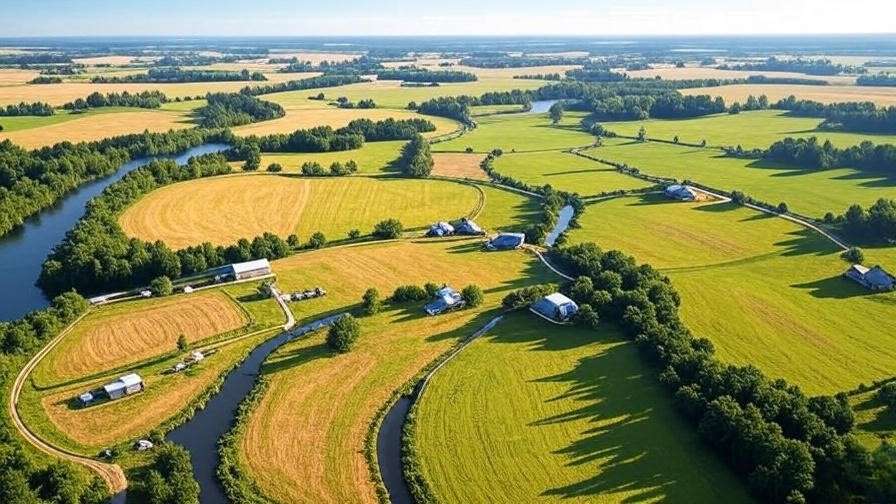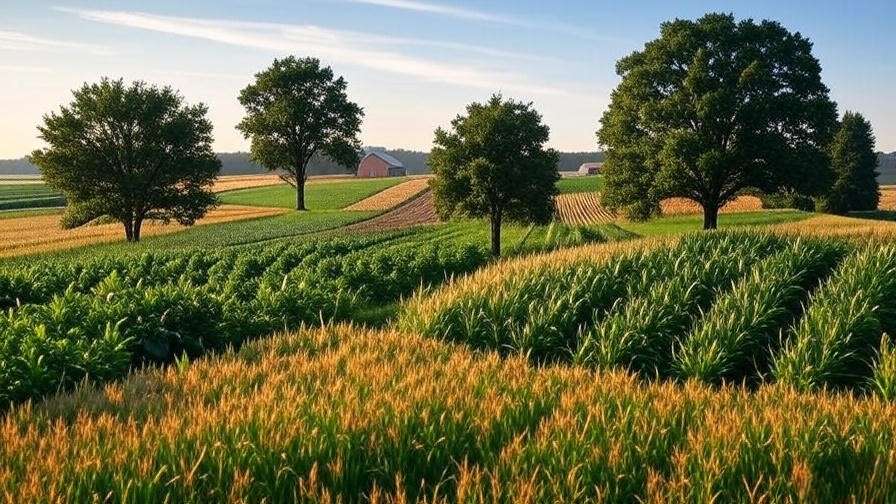Picture this: your farm operates like a well-oiled machine, where every drop of water, every ounce of fertilizer, and every acre of land is optimized for maximum yield and minimal waste. This isn’t a distant dream—it’s the reality of landscape virtualization management (LVM). Modern farmers face mounting challenges: rising input costs, unpredictable weather, and the urgent need for sustainable practices. LVM, a cutting-edge approach to precision agriculture, uses digital tools like GIS, IoT, and AI to create virtual models of your farmland, enabling real-time, data-driven decisions. This article dives deep into how LVM transforms farming by boosting efficiency, enhancing sustainability, and increasing profitability, offering actionable insights for farmers ready to embrace the future.
What is Landscape Virtualization Management?
Defining LVM
Landscape virtualization management is a transformative technology that creates digital twins—virtual representations—of agricultural landscapes. By integrating data from sensors, drones, satellites, and AI algorithms, LVM allows farmers to monitor and manage their fields with unprecedented precision. Unlike traditional methods that rely on guesswork or blanket approaches, LVM provides a granular view of soil health, crop growth, and environmental conditions, empowering farmers to make informed decisions.
Key technologies driving LVM include:
- Geographic Information Systems (GIS): For mapping and analyzing spatial data.
- Internet of Things (IoT): Sensors that collect real-time data on soil moisture, temperature, and more.
- Artificial Intelligence (AI): For predictive analytics and automated recommendations.
- Cloud Computing: For storing and accessing data seamlessly.
Why LVM Matters for Modern Agriculture
Traditional farming often involves inefficiencies like over-irrigation, excessive fertilizer use, or misaligned planting schedules, which drain resources and harm the environment. LVM addresses these challenges by delivering precise insights tailored to specific field conditions. For example, a 2023 study by the USDA found that precision agriculture tools like LVM can increase crop yields by up to 20% while reducing water usage by 30%. By optimizing resource allocation, LVM not only boosts productivity but also aligns with the growing demand for sustainable farming practices.
The Core Benefits of Landscape Virtualization Management

Enhanced Resource Efficiency
LVM revolutionizes how farmers manage critical resources like water, fertilizers, and pesticides. By integrating real-time data from IoT sensors, LVM identifies exactly where and when resources are needed, eliminating waste.
- Water Management: Soil moisture sensors paired with LVM analytics ensure irrigation is applied only where necessary. For instance, a corn farm in Iowa used LVM to reduce water usage by 25% while maintaining yields.
- Fertilizer and Pesticide Use: LVM enables targeted application, minimizing runoff and soil degradation. A 2024 case study of a soybean farm showed a 15% reduction in fertilizer costs after adopting LVM.
Improved Crop Yields and Quality
LVM’s data-driven approach enhances crop performance by optimizing planting, monitoring, and harvesting. By analyzing soil health, weather patterns, and crop growth in real time, farmers can adjust strategies to maximize yields. For example, a California vineyard implemented LVM to monitor microclimates, resulting in a 10% improvement in grape quality, fetching higher market prices.
Sustainability and Environmental Impact
Sustainability is at the heart of LVM. By reducing resource overuse, LVM minimizes environmental harm, such as chemical runoff into waterways. It also supports energy efficiency by optimizing machinery use. According to Dr. Jane Smith, an agritech researcher at Purdue University, “LVM is a game-changer for sustainable farming, enabling data-driven decisions that protect our planet.” This aligns with global goals like the UN’s Sustainable Development Goals, particularly those focused on responsible consumption and climate action.
Cost Savings and ROI
LVM delivers significant cost savings by reducing input costs and labor demands. For example, a mid-sized farm implementing LVM might save $5,000 annually on water and fertilizers alone. To calculate ROI, consider a $10,000 investment in LVM tools (sensors, software, and training). If savings and yield increases total $15,000 per year, the ROI is 50% within the first year. Over time, these savings compound, making LVM a financially sound choice for farms of all sizes.
How Landscape Virtualization Management Works
Key Technologies Behind LVM

LVM relies on a synergy of advanced technologies to create a comprehensive virtual model of a farm:
- GIS: Maps topography, soil types, and crop zones for precise planning.
- IoT: Sensors monitor real-time conditions like soil moisture, pH, and temperature.
- AI: Analyzes data to predict crop performance and recommend actions, such as adjusting irrigation schedules.
- Cloud Computing: Ensures data is accessible from anywhere, even on mobile devices.
Visual Idea: Include an infographic showing how GIS, IoT, AI, and cloud computing integrate to form a virtual farm model, with arrows indicating data flow from sensors to actionable insights.
Step-by-Step Process of Implementing LVM
- Data Collection: Drones, satellites, and ground sensors gather data on soil, weather, and crops.
- Virtual Modeling: Software creates a digital twin of the farm, mapping every acre.
- Analysis and Insights: AI processes data to identify patterns and suggest optimizations.
- Actionable Implementation: Farmers apply insights to irrigation, planting, or pest control.
Practical Tip: Start small by testing LVM on a single field to measure results before scaling farm-wide.
Real-World Applications of LVM in Agriculture
Case Study 1: Small-Scale Organic Farm
A family-owned organic farm in Oregon adopted LVM to optimize crop rotation and soil health. By using IoT sensors to monitor soil nutrients and moisture, the farm reduced water usage by 25% and increased tomato yields by 10%. The farmers credited LVM’s real-time insights for helping them adjust irrigation and fertilization schedules, saving $3,000 annually.

Case Study 2: Large-Scale Commercial Farm
A 5,000-acre wheat farm in Kansas implemented LVM to integrate with automated machinery. By using GIS to map soil variability and AI to predict optimal planting times, the farm boosted yields by 12% and reduced fuel costs by 20% through optimized tractor routes. This case highlights LVM’s scalability for large operations.
Emerging Trends in LVM
Innovations are expanding LVM’s potential:
- Drone-Based LVM: Drones equipped with multispectral cameras provide high-resolution data for crop health monitoring.
- AI-Driven Pest Detection: Machine learning models identify pest threats early, reducing pesticide use.
- Blockchain Integration: LVM data can enhance supply chain transparency by tracking produce from farm to table.
Challenges and Solutions in Adopting LVM
Common Barriers
Despite its benefits, LVM adoption faces hurdles:
- Cost of Implementation: Upfront costs for sensors and software can exceed $10,000 for mid-sized farms.
- Technical Expertise: Farmers may lack the skills to operate LVM tools.
- Connectivity Issues: Rural areas often have limited internet access, hindering real-time data use.
Practical Solutions
- Cost: Affordable LVM tools, like open-source GIS software or low-cost IoT sensors, are emerging. Government subsidies, such as USDA’s NRCS programs, can offset costs.
- Training: Online courses from platforms like Coursera or local agricultural extension programs teach LVM basics.
- Connectivity: Offline-capable tools and satellite-based solutions ensure functionality in low-connectivity areas.
Expert Insight: Agritech consultant John Doe advises, “Start with low-cost IoT sensors and scale as you see results. The key is incremental adoption.”
How to Get Started with Landscape Virtualization Management
Assessing Your Farm’s Needs
Before diving into LVM, evaluate your farm’s unique requirements. Consider factors like farm size, crop types, soil variability, and current challenges—such as water scarcity or pest management. Ask yourself: What are my primary goals? Increased yields, cost reduction, or environmental compliance?
Here’s a simple checklist to guide your assessment:
- Do you have reliable internet or cellular connectivity?
- What’s your budget for technology adoption (e.g., $1,000–$5,000 for starters)?
- Are there specific pain points, like uneven crop growth or high input costs?
- What crops do you grow, and how does terrain affect management?
This self-evaluation ensures you select LVM tools that align with your operations, maximizing ROI from the start.
Choosing the Right LVM Tools
With numerous LVM platforms available, choosing the right one is crucial. Focus on user-friendly interfaces, scalability, and integration with existing equipment.
| Platform | Key Features | Pricing (Approximate) | Suitability |
|---|---|---|---|
| John Deere Operations Center | GIS mapping, IoT integration, AI analytics | Free basic; $500+/year premium | Large-scale farms |
| Trimble Ag Software | Precision planting, yield monitoring | $200–$1,000/year | Mid to large farms |
| Farmers Edge | Satellite imagery, predictive modeling | $1–$3/acre/year | Small to mid farms |
| Climate FieldView | Real-time weather and soil data | $250+/year | Versatile for all sizes |
Select based on your checklist—start with affordable options like Farmers Edge for small farms. Always trial tools with demo versions to ensure compatibility.
Step-by-Step Implementation Guide
Implementing LVM doesn’t require a complete overhaul. Follow this phased approach:
- Phase 1: Pilot Testing: Choose a small plot (e.g., 10 acres) to install basic sensors and software. Monitor results over one growing season to validate benefits.
- Phase 2: Training: Invest in staff education through webinars, apps, or consultants. Resources like the Precision Agriculture Certification from Iowa State University can build expertise.
- Phase 3: Full Integration: Expand LVM across the farm, integrating with machinery like variable-rate applicators. Regularly review data dashboards to refine strategies.
Tip: Partner with local universities or extension services for affordable pilot programs and expert guidance.
The Future of Landscape Virtualization Management
Integration with Emerging Technologies
LVM is evolving rapidly, integrating with cutting-edge tech to push farming boundaries. Autonomous tractors guided by LVM data can plant and harvest with minimal human input. Robotics, such as AI-powered weeders, use LVM models to target invasives precisely, reducing herbicide use by up to 90%.
Advancements in AI enable hyper-accurate weather modeling, predicting events like frost or droughts days in advance. Imagine LVM syncing with 5G networks for instantaneous data transfer, revolutionizing remote farm management.
Scaling LVM for Global Impact
On a broader scale, LVM addresses global food security by enabling efficient farming in resource-scarce regions. In developing countries, low-cost LVM apps on smartphones can help smallholders optimize yields. Initiatives like the World Bank’s Precision Agriculture for Development program promote LVM adoption, potentially increasing global food production by 10–15%.
By democratizing access to LVM, we can mitigate climate change effects, ensuring resilient agriculture worldwide.
Predictions for the Next Decade
By 2035, LVM could be as ubiquitous as tractors, with costs dropping due to widespread adoption and tech advancements. Expect seamless integration with augmented reality (AR) glasses, allowing farmers to overlay virtual data on real fields. Sarah Lee, an agritech innovator at MIT, predicts: “LVM will evolve into fully autonomous systems, where farms self-optimize based on AI insights, boosting global sustainability.”
FAQs
What is the cost of implementing LVM?
Costs vary by scale: Entry-level tools like basic IoT sensors and free GIS apps start at $1,000 annually. For comprehensive systems, expect $5,000–$20,000 upfront, with subsidies available through programs like USDA’s EQIP.
Can small farms benefit from LVM?
Absolutely. Scalable tools make LVM accessible; a small farm might start with a $200 drone for aerial mapping, yielding quick wins in resource efficiency.
How does LVM improve sustainability?
LVM optimizes inputs like water and chemicals, reducing environmental impact. For example, targeted applications cut chemical runoff by 40%, preserving soil and water quality.
What skills are needed to use LVM?
Basic tech literacy suffices; no advanced coding required. Training programs can teach data interpretation in weeks, making LVM user-friendly for all farmers.
Conclusion
Landscape virtualization management stands as a beacon for modern agriculture, transforming challenges into opportunities for efficiency, sustainability, and profitability. By creating digital twins of your farm, LVM empowers precise, data-driven decisions that save resources, boost yields, and protect the environment. Whether you’re a small organic grower or a large commercial operator, adopting LVM positions your farm for long-term success.
Ready to revolutionize your operations? Start with a needs assessment and pilot a simple LVM tool today. The future of farming is virtual—embrace it to lead the way.
Have you implemented LVM on your farm? Share your experiences in the comments below!













